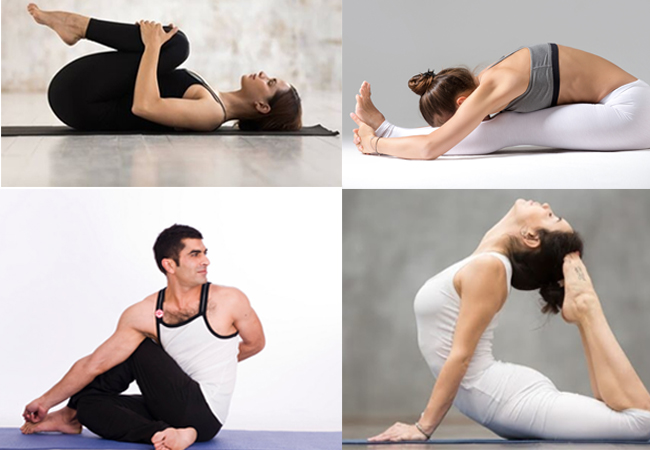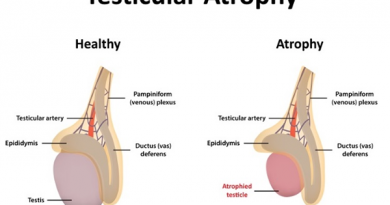Yoga Asanas for IBS Management ( Irritable Bowel Syndrome)
Abstract
Irritable Bowel Syndrome (IBS) is a disorder of the large intestine. It is chronic and patients may have episodes of both constipation and diarrhea at different times. Patients need medication when symptoms are severe and consistent for more than three days. Most of the time, the discomfort lasts for less than three days a month and can be managed by diet and lifestyle modification alone. Causes are not clear. Triggers are discussed. Triggers vary in women and men. Yoga can be practiced to minimize discomfort and manage symptoms. Diet suitable for IBS is provided at the end.
Introduction to IBS
A persistent condition of very uncomfortable bowel episodes accompanied by abdominal pain, bloating, and an intense feeling of dissatisfaction after bowel movement; as the name suggests: irritable bowel syndrome. It is a chronic condition, and symptoms may be mild and short lived, or extreme and prolonged. Irritable means very sensitive towards stimuli, which is true for the bowel habits of a person with IBS because sometimes the smallest of changes in diet or lifestyle can trigger the onset of symptoms.

Symptoms that indicate IBS
Symptoms can sometimes be so mild that home remedies or rest can provide great relief. They can be some or all of the following
- Loose or hard stools compared to normal
- A general feeling of discomfort as the bowel moves towards the rectum
- The discomfort disappears after excretion
- A mild pain spread all over the lower abdomen
- A feeling of bloating, the intestinal region feels stuffed
- One may feel like the organs are twisting inside
- One may not find his toilet timings changed and unexpected
- The texture and volume of stool may vary
Extreme symptoms – Can they be due to another condition?
Sometimes, the symptoms may be intense and unbearable especially as the bowels approach the rectum. They may indicate towards another, more serious condition such as an anal fissure, an ulcer in the rectum, or even cancer of the colon. They require diagnosis and tests such as stool examination.
They are
- Unintended weight loss
- Extreme diarrhea
- Bleeding in the rectum
- Vomiting, typically without nausea
- Pain that doesn’t ease after excretion
- Swallowing becomes uncomfortable
Causes and Triggers
There isn’t a precise cause for irritable bowels. The appearance of loose or hard stools can be traced to irregular peristaltic movements of the intestinal muscles i.e. the movements that push the digested food forward.
- If the movements are faster than normal, the water and nutrients from the digested food are not absorbed properly and fully, resulting in watery and sometimes skin-irritating stools, characteristic of diarrhea.
- On the opposite, if the movements are slower than normal, the absorption of water and nutrients is overdone. It results in hard and rough stool that is not only dry and rough but also hard on the anus. It is characteristic of constipation.
- A bacterial or viral infection can also disturb the normal bacterial composition of the intestines. Sometimes the gut bacteria overgrow in response to the entry of an external microbe in the body. This results in a bubbly stool which feels extremely uncomfortable and stiff as long as it is still inside the body.
- The normal functioning of a person’s digestive system may also get disturbed on consumption of some foods that are not usually eaten by them. They may contain wheat, milk or other dairy, soda drinks, fermented alcohol, etc.
- There has also been observed a correlation in one’s mental state and their gut. Emotions like fear, nervousness and anxiety may stimulate IBS.
- Some individuals, who smoke tobacco or use it in other ways, become dependent on it and find it difficult to excrete until they consume tobacco in their preferred way.
- Women may have short-term symptoms of IBS when their periods are near. The symptoms disappear at the start of the period.
Yoga Asanas for management of IBS

It appears that IBS greatly depends on one’s mental composure as well as the overall condition of the digestive system. Some yoga practices can be extremely beneficial not treatment of IBS but how one deals with it. Use a mat or a thin blanket for these practices.
1. Udarakarshanasana:-The twist of the GIT
Udarakarshanasana is like wringing the gastro-intestinal tract. It especially helps in cleansing the colon.
- Lie on your back. Keep the arms on the sides.
- Keep the body relaxed.
- This is the initial position.
- Bend the right leg at the knee.
- Move the right knee towards the left of the body and place it on the mat.
- Keep the spine straight as in the initial position.
- Press the right knee with the left elbow.
- Keep the right hand placed as in the initial position.
- Turn the neck to the right.
- This is the final position. Stay in the final position for 5 seconds. Breathing should be normal.
- Return to the initial position.
- Now bend the left leg at the knee.
- Move the left knee towards the right of the body and place it on the mat.
- Press the left knee with the right elbow.
- Keep the left hand as in the initial position.
- Turn the neck to the left.
- Stay in this position for 5 seconds. Breathing should be normal.
- Release the posture.
2. Pawanamuktasana
As the name suggests, this asana helps move out the gas build-up in the colon and hence relieves bloating.
- Lie on your back with arms resting on both sides of the body.
- Lift both the legs.
- Maintain the natural curve of the back.
- Bend the knees and bring them close to the chest.
- Exhale while doing so.
- Hug your legs.
- Resume normal breathing.
- This is the final position.
- Stay in the final position for 15 seconds.
3. Ardha Matsyendrasana
Named after Matsyendra, this asana provides a twist to the GIT with focus on the pancreas. It is a great exercise for diabetes management.
- Sit on the mat with both the legs extended in front of the body.
- Keep the back straight.
- Keeping its heel on the mat, bend the left leg at the knee.
- Keep the right leg straight.
- Place your right hand on the left ankle.
- Place the left hand behind you on the back.
- Move the chin close to the left shoulder.
- Exhale while doing so.
- This is the final position.
- Stay in this position for 10 seconds.
- Resume normal breathing.
- Rotate the neck back to default position.
- Lift the hands from their positions and straighten the leg.
- Now, bend the right leg.
- Place the left hand on the right ankle.
- Place the right hand behind you.
- Move the chin close to the right shoulder.
- Exhale while doing so.
- Resume normal breathing and stay in the final position for 10 seconds.
- Rotate the neck back to the default position.
- Lift the hands from their positions and twist back as in the initial position.
- This is one round. Practice three rounds.
4. Bhujangasana
Meaning the pose of the cobra, this pose is a great restorative pose for the lower abdomen and the back. It is an easy replacement for asanas beneficial for the digestive system.
- Lie on your stomach.
- Let the arms rest on both sides of the body.
- Bring the hands parallel to your chest, palms facing down.
- Lift the head up, and bend the spine backwards with the stomach resting on the mat.
- Support the body with the palms sharing weight. Keep the elbows slightly bent.
- Inhale while doing so.
- This is the final position.
- Stay in the final position for 5-10 seconds.
5. Adhomukha Shvanasana
Meaning the pose of the downward-facing dog, this asana inverts the colon and eases bloating as well as diarrhea.
- Stand on the mat with feet shoulder-width apart.
- Raise the arms while inhaling.
- Start bending forwards until your palms touch the mat.
- Walk with the palms until a comfortable position is reached.
- Exhale and push the back inwards.
- The lines joining the hip and the hands, and that joining the hip and the heels should be straight.
- Don’t strain any part of the body.
- Align the face with the arms.
- This is the final position.
- Resume normal breathing.
- Stay in the final position for 10-20 seconds.
6. Paschimottanasana
Meaning ‘the pose of stretched back’, this asana improves blood circulation in the lower abdomen and supports digestion and absorption.
- Sit on the mat with legs straight in front of you.
- Keeping the spine straight, raise and straighten the arms.
- Inhale while doing so.
- Lean forward until you can hold or touch your toes.
- Exhale.
- Touch your knees with the chin.
- This is the final position.
- Stay in the final position for at least 10 seconds.
- Perform 3 repetitions.
Lifestyle tips on management of IBS
Besides adaptation of yoga as a daily (or at least regular) activity, one should strive to maintain a balanced lifestyle and routine by following these tips
- Drink at least 6 glasses of water in a day.
- Steam sprouts, cabbage, beans, peas etc before consuming.
- Maintain hygiene; take care while eating at work or in public places.
- Consume clean drinking water.
- Eat more citrus fruits. Sprinkle lemon juice on salads.
- Include cucurbitaceous fruits and vegetables in your diet.
- Try to use a toilet seat that is low.
- Reduce or quit smoking and drinking alcohol.
- Try to eat and sleep at a fixed time.
- Get a good quality sleep.
- De-stress by learning and practicing yoga & meditation.
Conclusion
IBS can be very well managed if the person expecting the symptoms is mentally prepared for it and isn’t afraid of it. Actually almost all lifestyle disorders can be mafnaged with a calm mind. Yoga is one such practice that trains one to handle everything without being stressed. A nutritious diet with careful selection of ingredients and a lifestyle with smart preference of activities is certainly the best management of IBS.





